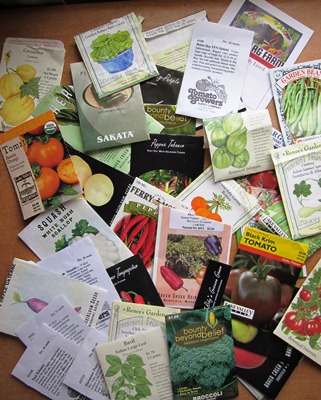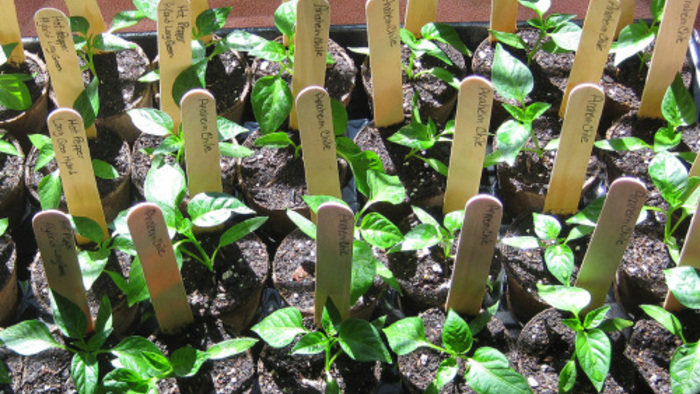
I was part of the gardening horde that descended on the seed swap during the National Heirloom Expo held in Santa Rosa, Calif., in September. It was my first time to attend an event like that so I wasn’t sure of the protocol and I hadn’t thought to bring seeds to swap.
But it took only a few seconds to understand the simple seed swap rules: grab an empty envelope, find seeds, sprinkle them into the envelope, label the packet. Repeat.
Even though it sounds easy, there were dozens of other seed swappers vying for the same seeds.
I came away with packets of Ukrainian Beauty eggplant, Royal Black tomato, Thai Mae Sai cucumber, Gigantus sunflower, and Bergamot lavender monarda. I could have scored many more varieties, but I ran out of empty packets at the same time I ran out of energy to keep (politely) elbowing my way through the crowd.
I noticed that some of the seed packets had “packaged for” dates that went back four or more years. That didn’t stop a single gardener because seeds stored in a cool, dry place can remain viable for several years.
Once I got home and added the envelopes of seed-swap packets to my stash, I realized I had dozens of vegetable, herb and flower seeds leftover from previous seasons. While I’ve been using seeds from some of these packets for several years, I found packets that had never been opened.
I’m sure I’m not the only gardener who’s gotten carried away at the beginning of a gardening season and bought too many seeds. Because seed catalogs will soon start flooding my mailbox, I’ll once again be tempted to order more seeds (and spend more) than I can plant.
Here are six ideas for clearing out the old supply to make way for the new:
- Make a list of all the leftover seed packets. Categorize the seeds you have on hand in stacks of tomatoes, peppers, greens, herbs, squash, etc.
- Decide which varieties you want to plant again and which can be switched out for new varieties.
- Donate unwanted seeds. Look for community gardens, garden clubs, master gardener programs, school gardens, church gardens, and others who could benefit from a bounty of seeds.
- Participate in an online seed swap like the one sponsored by the National Gardening Association.
- Celebrate National Seed Swap Day. The last Saturday in January is set aside to swap seeds with other gardeners. Consider hosting your own seed swap with gardening friends, family, neighbors and coworkers. Ask them to bring their leftover seed packets and provide plenty of blank (recycled) envelopes, pens for labeling, and tape for sealing. Encourage swappers to take only the number of seeds they can use in their garden.
- Test leftover seed for viability. Put 10 seeds on a paper towel and cover with another paper towel. Moisten the towels with water and place in a plastic bag. Check after 7 to 10 days to see how many seeds have sprouted and multiply the number sprouted by 10 to get a percentage. If the number is above 75 percent, you can figure 75 percent of the seeds you plant will sprout in the garden.
Do you have other ideas for leftover seed packets? If so, please share them here!


















Comments
Log in or create an account to post a comment.
Sign up Log in